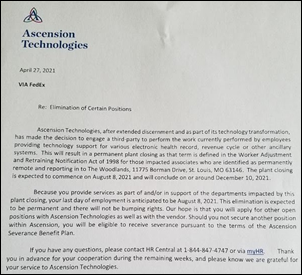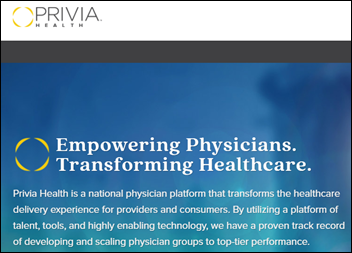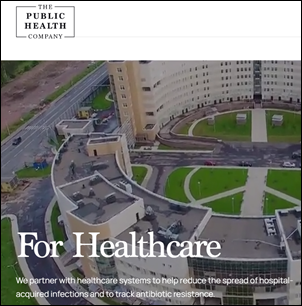Curbside Consult with Dr. Jayne 5/3/21
HIMSS invited me to complete “a quick five-question survey” regarding attendance at HIMSS21. I’m no stranger to research around user and consumer needs, so I was curious what kinds of questions they would ask. The first question was “What are you most looking forward to at HIMSS21?” Choices included: attending world-class sessions, building new relationships, finding tech solutions, reuniting with colleagues, or other.
In the past, I’ve struggled with the quality of sessions. Part of that is due to HIMSS-related factors, including the long lead time between when the submissions are due and the actual conference. Presenters can’t show off the latest and greatest when they have to declare their intentions 10 months prior to the conference. We’ll have to see what that looks like this time since HIMSS20 was canceled and HIMSS21 was pushed back. To be honest, I haven’t paid much attention to the submission process or timeline because I wasn’t sure this year’s conference was even going to happen.
The second question was about professional goals, and to be sure, “getting material for everyone’s favorite healthcare IT blog and looking for sassy shoes” was not a choice. Maybe I should have selected the “other” block and done that as a write-in, but knowing HIMSS, there was probably tracking information attached and I wouldn’t want to give up my anonymity.
The options for this question included: attaining actionable education, building peer connections, developing my career, earning CE credits, experiencing innovation, finding new partnerships, job seeking, and problem solving. I’m not sure how well HIMSS21 will be able to deliver on some of these options given the relatively small number of exhibitors and the hybrid virtual / in-person format. Not to mention that many organizations are still under travel bans. A number of my favorite CMIOs aren’t going to be able to attend in-person for that reason. Most of the big exhibitors are staying home as well.
The third question was whether we’ve booked hotels yet, which I’ve done. I’ll be staying at one of the connected conference hotels so I can minimize my time outdoors in Las Vegas in August. I’m not fond of the heat even when people remind me “it’s a dry heat” and the best people watching in Las Vegas happens after the sun goes down, anyway. There are supposed to be sessions at Caesar’s which would involve a trip outside, so it may not help as much as I thought, but I’m playing the odds as most gamblers do.
The final question was “How can HIMSS staff make your conference experience exemplary?” At this point and specific to HIMSS21, I really don’t know. It’s going to be an interesting year and we just have to keep open minds. Thinking more broadly though, HIMSS needs to consider lowing the attendance costs for individual attendees. It’s a relatively pricey conference considering the minimal return on investment for those of us who aren’t attached to institutions that are footing the bill. Plus, as we all know, nearly all healthcare costs are ultimately passed on to the patient in one way or another, and it’s really difficult to justify attending at times.
I precepted a nursing student today, and due to a relatively slow urgent care day, she didn’t get a lot of clinical experience. She did learn how to work through an EHR downtime, though, and I was grateful that we weren’t completely slammed with patients when it crashed. Fortunately, this outage lasted less than half an hour and we still had access to our PACS, so we could keep seeing patients. It was nostalgic to pull out the paper script pad, though. She also learned a fair amount about healthcare finance, as one of my clinical assistants is working on a health administration certificate and wanted to pick my brain about operational structures at for-profit versus not-for-profit organizations.
Most people that fall into the student category tend to be younger and have had fewer interactions with the healthcare system. They have not experienced the sticker shock of receiving an out-of-network explanation of benefits statement for a hospitalization and may not have had the experience of receiving multiple bills from all the different vendors and clinicians involved in a diagnostic procedure. Most people go into healthcare fields because they want to help patients, and I think understanding the sausage-making that goes on behind the scenes is critical to their education. Understanding the costs of healthcare helps them appreciate why patients may not fill their prescriptions or make the specialist appointments that we recommend.
We also had a good conversation about health insurance and how most patients have their coverage tied to their employers, which is something most students who are still on their parents’ coverage or using student health services at their universities might not understand. She was surprised to learn that sometimes patients stay in jobs they don’t like strictly because of insurance benefits and not wanting to change because of the risk of having to change to new providers or a different care team just because their coverage changes. My state requires all high school graduates to take a personal finance class, and although the curriculum covers things like homeowners’ insurance and auto insurance, there’s not much discussion of healthcare expenses. Since I’ll have some free time after I finish up my last urgent care shift on Friday, maybe I should volunteer to teach a session on understanding health insurance, how to read an explanation of benefits statement, how medical billing works, and how to navigate referrals and prior authorizations. Failure to understand those elements can have an impact on your personal finances, indeed.
Back to thinking about educational conferences, my friends at West Virginia University are offering a seminar that seems like a much better use of limited conference dollars, focusing on point-of-care ultrasound. It’s being hosted at a resort that caters to whitewater rafting enthusiasts, and attendees can take advantage of the whitewater at the New River Gorge National Park. Having run this section of the river in 2019, I would rather be there than Las Vegas. See if you can spot me in the photo – I’m the one in the helmet.
What are your favorite conference locales? Leave a comment or email me.

Email Dr. Jayne.
























































Traditionally Professional Courtesy is something that physicians gave each other - but we had to be careful with it when…